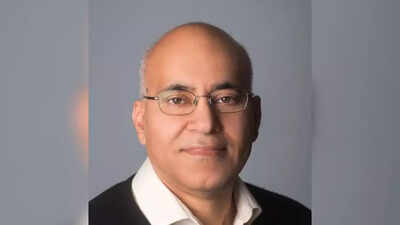Jitendra Malik’s education path: This Indian-origin AI expert went from IIT Kanpur to Stanford, then pioneered machine vision at UC Berkeley

In the bustling town of Mathura, India, a young boy named Jitendra Malik found himself captivated by puzzles, patterns, and the invisible logic of the world. That boy would one day help teach machines to see. His journey from school classrooms in Jabalpur to the elite laboratories of UC Berkeley, has become a roadmap for aspiring students in both India and abroad.But Malik’s story is not just one of academic success. It’s about how the power of education—when matched with vision and curiosity, can reshape an entire field.
IIT Kanpur : Where genius took flight
Jitendra Malik’s academic odyssey truly took flight when he earned admission into the Indian Institute of Technology (IIT) Kanpur, one of India’s premier engineering institutions. By the time he graduated in 1980, he wasn’t just another engineer, rather he was the gold medalist, recognised as the best in his class in electrical engineering.IIT Kanpur provided Malik with more than a rigorous education, it gave him exposure to cutting-edge thought and global ambition. It was here that his interest in systems, computation, and intelligence deepened—foreshadowing a future in artificial intelligence.
The AI spark ignites at Stanford
After IIT, Malik set his sights westward and joined Stanford University for a PhD in Computer Science. He arrived in California in the early 1980s, just as the digital revolution was beginning to take root.At Stanford, Malik immersed himself in the world of computer vision, an emerging field that asked a fundamental question: Can we teach machines to see like humans? He pursued that question with vigor, completing his PhD in 1985 and helping lay the foundations for the next generation of visual computing.
Innovation and mentorship at UC Berkeley
In 1986, Malik joined the faculty of the University of California, Berkeley, where he remains to this day as the Arthur J. Chick Professor in Electrical Engineering and Computer Sciences.Over nearly four decades, Malik has pioneered breakthroughs in computer vision, graphics, and machine learning. Concepts such as anisotropic diffusion, shape context, normalised cuts, and R-CNN, now cornerstones of image recognition and AI, emerged from his research group.Malik didn’t stop at research. He’s also mentored over 60 PhD students and postdoctoral fellows, many of whom now teach and lead in top institutions like MIT, Caltech, CMU, and Cornell. His influence has cascaded across generations of AI thinkers.
Leading research in the tech frontier
In 2018, Malik took on a new role as Research Director at Facebook AI Research (FAIR) in Menlo Park, California. There, he leads a team pushing the boundaries of computer vision, robotics, and machine learning, helping bridge the gap between academic theory and real-world AI systems.His move reflects a larger trend: world-class researchers shaping not just academic thought, but the technology that powers modern life.
A legacy etched in citations
Jitendra Malik is one of the most cited computer scientists in the world, with over 150,000 citations and multiple prestigious awards, including the IEEE Computer Pioneer Award, the IJCAI Research Excellence Award, and fellowships from IEEE, ACM, and the National Academy of Sciences.But perhaps his greatest legacy lies in his story of how education at IIT Kanpur and Stanford equipped him not just with knowledge, but with the tools to pioneer, to question, and to lead.Jitendra Malik’s journey shows that a solid foundation, combined with relentless curiosity, can carry a student from small-town India to the global stage of AI. His path isn’t just a personal success story; it’s a blueprint for how education can shape not only a career but an entire field.For today’s students dreaming of building future technologies, Malik’s life offers a powerful reminder: where you begin doesn’t limit where you can go, especially when learning leads the way.TOI Education is on WhatsApp now. Follow us here.





